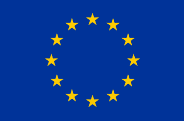
Safe non-food consumer Products in the EU and China
Different economic operators in the supply chain have very clearly defined responsibilities, so it is important for all economic operators to understand the following definitions:
Technical documentation is generated by the product manufacturer to demonstrate that the conformity assessment process has taken place and is provided to the market surveillance authorities, upon request, to show that the product is safe.
The generation of, keeping and production of the technical documentation upon request is a legal requirement for products which are subject to European harmonization legislation (the laws that require CE marking).
Where the manufacturer does not have a branch company within the EU, then the authorised representative is required to produce the documentation to the market surveillance authority if asked to do so.
The technical documentation can be produced in any of the official EU languages. Most often it is written in English.
(Note that this is different when it comes to documentation for the user, for instance the user’s guide and warnings on the product. These must be in the language of the country where the product is sold.)
Some products must have the design of the product approved by a specific type of test laboratory before being able to display the CE mark and be placed on the EU market. Sometimes the supervision of the notified body is also required during the production process, but this is only for certain products.
Products such as toys and electrical items do not have to be tested by an independent laboratory, but this is always a good idea to ensure that the harmonized standards which outline tests to ensure that essential safety requirements have been met at the design and production stages. A test report alone is not evidence of conformity, but it provides additional assurance that product design and production have met the relevant safety requirements.
The contact information about the authorised representative should be marked on the product, the product’s packaging, the parcel or an accompanying document.
The distinction between the manufacturer’s information and the authorised representative’s information could be achieved by adding the word ‘manufacturer’ before the manufacturer’s contact information and the words ‘authorised representative’ before the authorised representative’s contact information.

This website was created and maintained with the financial support of the European Union. Its contents are the sole responsibility of SPEAC project and do not necessarily reflect the views of the European Union.